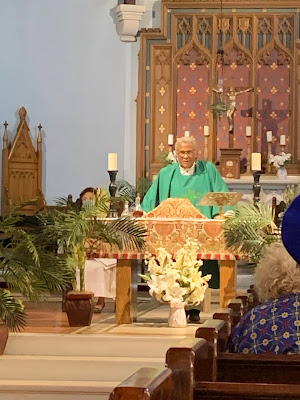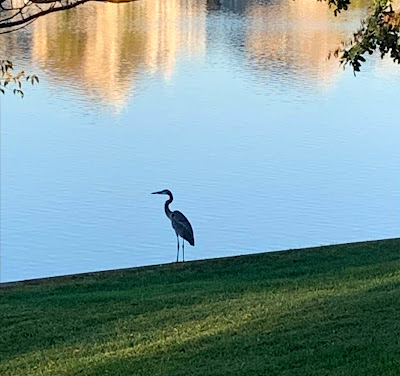10/16
 |
| Sanctuary and religion panel |
The International Peace Bureau held its second "Congress" in Barcelona, Spain last week. During the Congress, I was on a panel in a workshop on Religion, Peace and Sanctuary coordinated by Susan Smith of the Fellowship of Reconciliation and the Muslim Peace Fellowship. My colleague panelists were:
Maglaha Hamma, Western Sahara Refugee and Activist@Nonviolence Association of the Western Sahara (NOVA); Runbir Serkepkani, Kurdish Activist @Christian Peacemaker Teams, Aegean Migrant Solidarity Program; and Chrissy Stonebraker-Martinez, Co-director of the Inter-Religious Task Force on Central America and FOR-USA Co-Chair.
Following is my presentation....
My work in global just migration comes as part of my commitment as a person of faith to building a more just, humane, inclusive and sustainable world.
Yesterday, many of us had a guided tour of the exhibit on the plaza of the history of violence in Central America and its impact on migration and asylum seeking. That is where my story begins. Shortly after dawn, in October 1992, my friend John Fife and I went out to meet the student volunteers who would go out every morning to photograph that day’s harvest of mutilated bodies dumped after another night of terror in the ongoing massacre, genocide of the poor carried out by the death squads of the US supported Salvadoran regime. The photos had to be taken before sanitation crews removed the bodies for disposal. The photos would be kept at the diocese office and were the only way families could find out what had happened to their disappeared loved ones.
We were there on behalf of the Presbyterian Church seeking to understand what was causing so many Salvadorans to risk their lives crossing the deadly Sonoran desert to come to the US. John was involved because one morning there was a knock on his door and someone was there seeking shelter. When he heard the story, John opened the doors of the church. And inspired by an ancient tradition whereby fugitives fleeing for their lives could claim respite and protection within the doors of the church, the Sanctuary Movement was born.
In the next year, I would go to Arizona and travel with John across the border to visit refugee detainees in a Nogales, Mexico jail, once even encountering someone I had once met in a Salvadoran prison, and then facilitate and accompany one of these “pilgrims” across the border to a safe haven on the other side.
In 2007, I was visiting Berlin with a group of clergy from New York City. We were meeting with Pastor Juergen Quandt at the Heilege Kruez church to learn of their work with asylum seekers. Pastor Juergen described how their work had begun by responding to Palestinian refugees from the Lebanese Civil War in the 80’s. I told him that it reminded me of the work that we had done with Central Americans doing those years and he responded, “that’s where we got the idea.”
I knew that it was important for those involved in this work on both sides of the ocean to meet one another.
One year later, with the help of the Halbreich Foundation and the
Fellowship of Reconciliation, and Stony Point Center, church asylum workers from Germany traveled to Arizona to meet with their colleagues from No Mas Muertos and other groups involved in Sanctuary work. A year later a return visit to Germany would take place. We began to understand the parallels between the life threatening realities of the Sonoran desert and the Mediterranean Sea for those risking their lives seeking asylum.
After a few years’ hiatus, the resurgent world migration crisis led us to come together again, made easier by the emergent global communications technologies.
In 2016, our work group produced the International Sanctuary Declaration. It had two main purposes: the first was to arrive at a common set of principles for those engaged in this work. The other was to begin a process of advocacy that could result in internationally recognized protocols for just migration,. Here is the Declaration:
INTERNATIONAL SANCTUARY DECLARATION (English first, en español abajo)
We express our deep concern for the well-being of the refugee children, families and all migrants currently arriving at our borders, as well as those struggling to live within our borders. In response to the increased numbers of people around the world who are being forced to leave their home countries, and the simultaneous increase in punitive enforcement in many receiving countries, we affirm the following principles to guide and inspire our efforts to respond:
Compassionate Response: We care deeply about refugee children, families and all migrants, and we urge our countries to have open arms to protect them and preserve their human dignity. We reject detention of migrants as a violation of human rights and dignity.
Due Process: We advocate for fair and timely legal proceedings, competent legal representation, and due process for children, asylum seekers, and all migrants.
Family Unity: We uphold and respect the unity of families as a basic human right.
Restorative Justice: We desire revitalization and healing of our borderlands, not militarization. The only long-term solution is a holistic approach that prioritizes safety and opportunity for migrants and addresses root causes.
Civil Initiative: As long as our governments are not adequately addressing these humanitarian crises, citizens have the right and responsibility to respond with an approach that follows the mandate to provide sanctuary when needed and, above all, to love our neighbors.
Based on these principles, we covenant with one another to work together for just and humane response to all migrants both at our borders and within our countries. We call on our governments, and the governments of all countries receiving migrants in response to the current and ongoing international humanitarian and refugee crisis to embrace these principles.
Later that year the General Assembly of the Presbyterian Church would endorse the statement as well as many other faith based organizations. Another round of visits would begin in 2018 with representatives from our expanding circle of colleagues. Our last pre-covid visit took place in November 2019 to Tucson/Nogales, El Paso/Juarez and Stony Point, New York. Today we have an ever expanding work group with participants from the US, Canada, Mexico, Europe and Africa who are involved in the front line of just migration work.
I come to this work as one who seeks to follow Jesus. My tradition finds inspiration in our commonly held Hebrew Scriptures…or Old Testament…and the Christian New Testament. Throughout the Five Books of the Torah, (Law, or better teaching) there is a constant call to care for the widow, the orphan and the stranger at your gate. (EG Deut.10:18). At the very center of the Torah with as many verses before as after is this verse, Leviticus 19:18
18You shall not take vengeance or bear a grudge against any of your people, but you shall love your neighbour as yourself: I am the Lord.
This is the verse that Jesus in Mark 12:31, (and Matthew 22:39) would quote as the most important commandment, the essence of loving God is loving neighbor.
…The most important commandment is to
30Love the Lord your God with all your heart and with all your
soul and with all your mind and with all your strength.’
31The second is this ‘Love your neighbor as yourself.’ No other commandment is greater than these.”
There are at least 18 variations of this quote in the Bible.
In my reformed tradition, we understand ourselves to have a responsibility for the stewardship of creation. That work is guided by a vision of shalom, a peace that is not simply the absence of violence but is a wholeness, including justice….
But for me, faith is not proof texting or assent to theological proposition but is a way of being, a life lived.
So for me, this struggle for just immigration is a basic expression of faith.
Not for me, However….it is more than an expression of faith, it is an expression of being human. The story of humanity is the story of people on the move. For us , there can be no distinction between so called economic refugees and asylum seekers. All are people in motion, nearly all as a result of political policies beyond their control. Everything from the texture of our hair to the color of our skin to the words we speak the food we eat and the religions we practice are the result of people in motion encountering one another. And coming together. There is no language, culture or religion that is pure;. The stream is everflowing and unique particularities come together only for their own season ready to make their own contribution to the stream. Which then flows on.
On a spiritual level, for those of us who claim the identity of Christian, it could be argued that the whole Biblical narrative is one of people on the move, from Adam and Eve sent out of the Garden to the Hebrews fleeing Egypt to Babylonian exile to Jesus' family fleeing for their lives to Paul's travels throughout the Mediterranean... The story of God's people is the story of hujmanity. We are all part of what AI Wei Wei has called the “human flow.”As part of humanity, we have a responsibility to see that the flow continues with as much compassion, humaneness and justice as possible. That is our calling, that is our work. And for me, that is what it means to be faithful…..
























